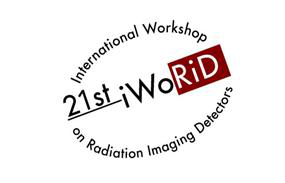Speaker
Description
Ion-beam radiotherapy has the capacity to improve cancer treatments by highly conformal doses to the tumor. This results in a better sparing of healthy tissue in comparison to the standard radiotherapy with photons. On the other hand, the dose concentration–with steep gradients– increases the sensitivity of ion-beam radiotherapy to potential uncertainties during the treatment process like deviations between the predicted and the actual ion stopping power of the patient’s tissue or anatomical changes of the patient geometry. Therefore, an accurate measurement of the actual stopping power distribution (relative to water, abbreviated: RSP) is of great interest. In this respect, performing an ion-beam radiography (iRAD) of the patient, who is already positioned on the treatment couch, right before the application of the treatment could be a valuable tool. iRAD could provide direct measurements of the RSP integrated along the beam direction, also called water-equivalent thickness (WET) of the object to be imaged. The WET based on iRAD measurements could then be used to verify that the actual RSP distribution and the one planned on are in agreement. Furthermore, iRAD can in principle provide a higher soft-tissue contrast at the same dose compared to imaging with x-rays. However, the lack of suitable detection systems for clinical application and a limited spatial resolution due to multiple Coulomb scattering (MCS) of the ions are challenges to be met.
To experimentally investigate the capabilities of iRAD, we built a small prototype detection system that solely consists of thin silicon pixel detectors. Here, the image contrast is obtained by precise energy deposition measurements of single ions in a 300 µm thick silicon sensor downstream of the imaged object. Measurements with protons (resulting in proton-beam radiographs: pRADs) and helium ions (αRADs) were performed at the Heidelberg Ion-Beam Therapy Center (HIT). The experiments have shown that a method of ion identification (especially in the case of αRADs) for an efficient suppression of background signals and a system for ion tracking upstream and downstream of the imaged object are substantial to reach clinically-relevant image qualities. The ion identification and ion tracking led to improvements with respect to the contrast-to-noise ratio (CNR) and the spatial resolution, respectively, such that WET differences of 0.6 % in head-sized phantoms could be resolved, and spatial resolutions with σ_LineSpreadFunction < 1.1 mm were achieved.
In this contribution, a fair comparison—using the same detection system—between pRAD and αRAD considering CNR, spatial resolution, and imaging dose is presented. Furthermore, future steps, which are required to bring the prototype detection system closer to an envisaged clinical application, are discussed.
Figure 1 shows a measured helium-beam radiography (αRAD) of a cherry. It exemplarily demonstrates the image quality that can be achieved with this ion-imaging modality.
